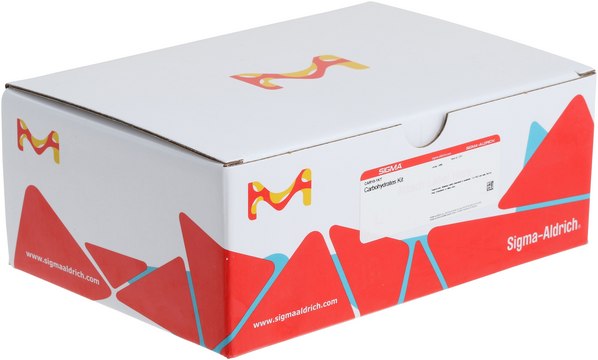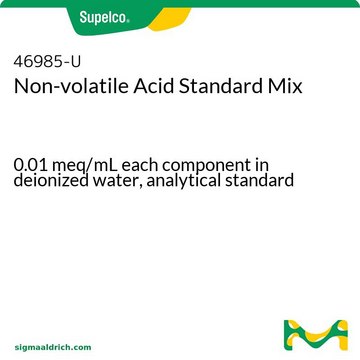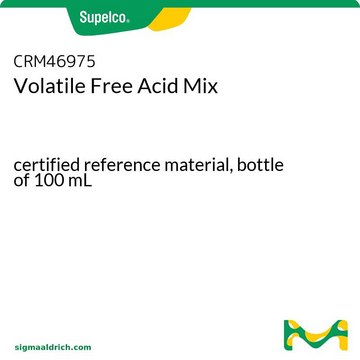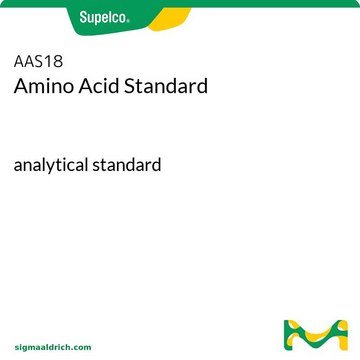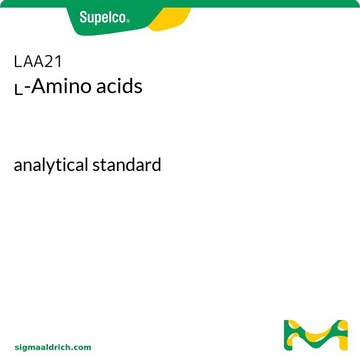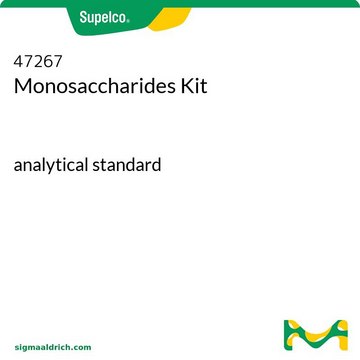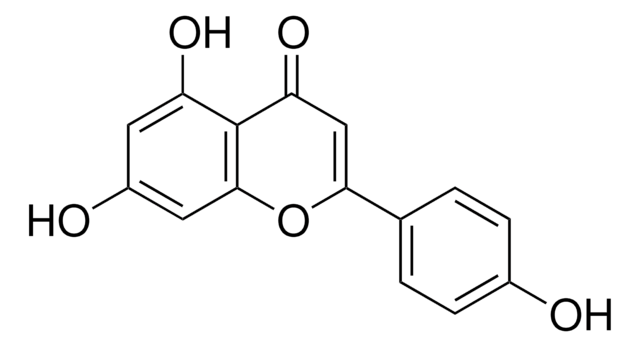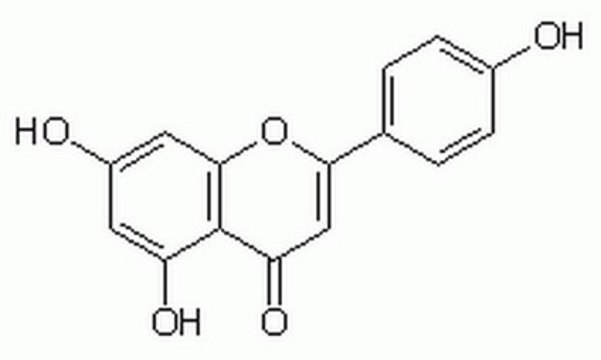47264
Organic Acids Kit
(individually packaged), analytical standard
Select a Size
Select a Size
About This Item
Recommended Products
grade
analytical standard
Quality Level
CofA
current certificate can be downloaded
packaging
pkg of 1 kit
concentration
(individually packaged)
technique(s)
HPLC: suitable
gas chromatography (GC): suitable
application(s)
cleaning products
cosmetics
food and beverages
personal care
format
neat
storage temp.
-10 to -25°C
1 of 4
This Item | SMB00702 | 10798 | 178278 |
|---|---|---|---|
| technique(s) HPLC: suitable, gas chromatography (GC): suitable | technique(s) - | technique(s) - | technique(s) - |
| application(s) food and beverages | application(s) metabolomics | application(s) - | application(s) - |
| format neat | format - | format - | format - |
| Quality Level 100 | Quality Level 200 | Quality Level 100 | Quality Level 100 |
| grade analytical standard | grade - | grade - | grade - |
| storage temp. 2-8°C | storage temp. −20°C | storage temp. −20°C | storage temp. 2-8°C |
General description
Application
Kit Components Only
- Acetic acid 500 mg
- Adipic acid 500 mg
- L-Ascorbic acid 500 mg
- Benzoic acid 500 mg
- Butyric acid 500 mg
- Citric acid 500 mg
- Isobutyric acid 500 mg
- Formic acid 500 mg
- Fumaric acid 500 mg
- L-(+)-Lactic acid 100 mg
- DL-Isocitric acid trisodium salt hydrate 100 mg
- Maleic acid 500 mg
- Malonic acid 500 mg
- D-(+)-Malic acid 100 mg
- Oxalic acid 500 mg
- Phytic acid 500 mg
- Propionic acid 500 mg
- (-)Quinic acid 500 mg
- Succinic acid 500 mg
- Shikimic acid 100 mg
- D-(−)-Tartaric acid 500 mg
related product
Signal Word
Danger
Hazard Statements
Precautionary Statements
Hazard Classifications
Acute Tox. 3 Dermal - Acute Tox. 3 Inhalation - Acute Tox. 4 Oral - Eye Dam. 1 - Flam. Liq. 3 - Skin Corr. 1 - Skin Sens. 1 - STOT RE 1 Inhalation - STOT SE 3
Target Organs
Lungs, Respiratory system
Supplementary Hazards
Storage Class Code
3 - Flammable liquids
Flash Point(F)
104.0 °F
Flash Point(C)
40 °C
Regulatory Information
Choose from one of the most recent versions:
Already Own This Product?
Find documentation for the products that you have recently purchased in the Document Library.
Which document(s) contains shelf-life or expiration date information for a given product?
If available for a given product, the recommended re-test date or the expiration date can be found on the Certificate of Analysis.
How do I get lot-specific information or a Certificate of Analysis?
The lot specific COA document can be found by entering the lot number above under the "Documents" section.
What solvent is in the 47264 Organic Acids Kit?
The individually packaged components contain no solvent; the components are neat.
How is the 47264 Organic Acids Kit packaged?
Each component of the Organic Acids Kit is individually packaged in either a flame sealed ampule or screw-thread vial.
How do I find price and availability?
There are several ways to find pricing and availability for our products. Once you log onto our website, you will find the price and availability displayed on the product detail page. You can contact any of our Customer Sales and Service offices to receive a quote. USA customers: 1-800-325-3010 or view local office numbers.
What is the Department of Transportation shipping information for this product?
Transportation information can be found in Section 14 of the product's (M)SDS.To access the shipping information for this material, use the link on the product detail page for the product.
My question is not addressed here, how can I contact Technical Service for assistance?
Ask a Scientist here.
Our team of scientists has experience in all areas of research including Life Science, Material Science, Chemical Synthesis, Chromatography, Analytical and many others.
Contact Technical Service